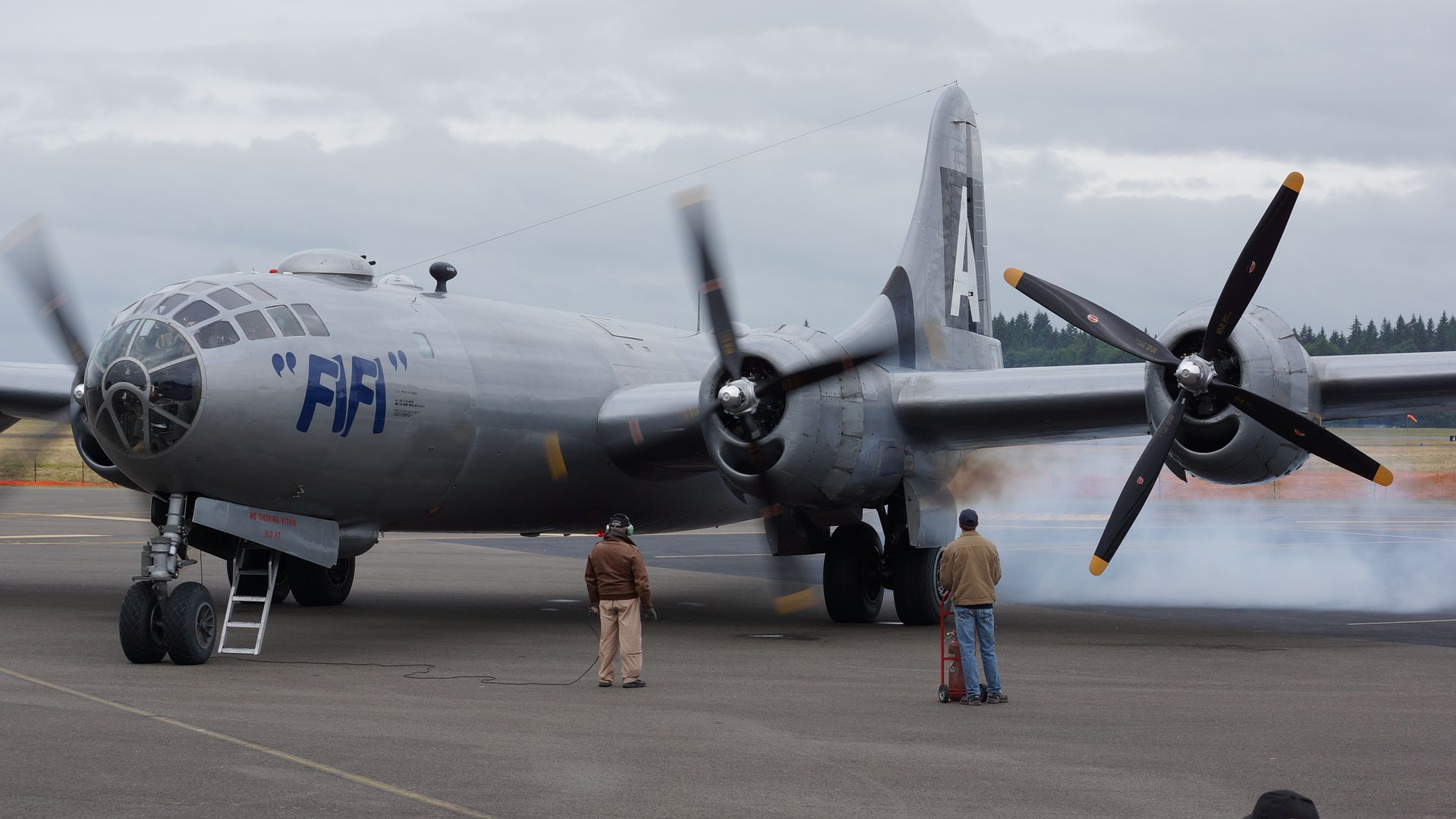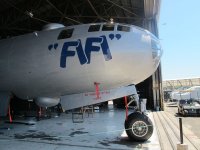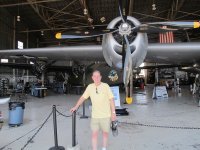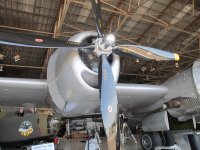The pilots will have control of the throttles while taxiing and at the beginning of the takeoff roll, using mainly the throttles to keep the aircraft down the center-line up until about 60-knots by which time the rudder becomes effective. At this point, the pilots will call for max power (44" MP) and the FE will take over the throttles until the aircraft is back on the ground again. As you can hear in the video, through the approach, the pilot(s) will make callouts to the FE for power changes to decrease/increase airspeed as needed - in the video, these callouts begin with "Manifold 26", then "Manifold 24", and then "Manifold 22", to keep the airspeed down as they are descending. Once they begin leveling off the approach a bit, they start slowing up a bit too much and they start calling for "Manifold 24", and then "Manifold 26". As can be heard in the video, just before reaching the threshold of the runway and initiating the flare, the pilot calls out "ease them off" and the FE begins pulling the throttles back to idle.
There are elevator trim wheels on both sides of the cockpit - one at the left of the pilot, and one at the right of the co-pilot, and there are throttle levers on either side of the pilots as well, in addition to those at the FE station (all interlinked of course), but only the FE has access to prop/mixture/fuel/ignition/starter controls.
As can be seen in photos/video of FIFI, and now Doc, the emergency escape hatch by the flight engineer is almost always kept open, as it allows the FE to see the starboard engines better (while also providing better ventilation on hot days). From where the FE sits, facing backward, he can visually keep an eye on the engines outside the aircraft as well, and not only just the instruments.
While the whole procedural system of pilot/FE operations in the B-29 was very much a new thing for military aircraft at the time, the Boeing 314 had already been in operation with the same sort of procedural operation, with a flight engineer controlling all of the engine work from a separate panel/location behind the main cockpit. Of course by the mid-40's, this would become common-place in all of the largest of American bombers/airliners that would follow.







 It does give some insight into how these bombers have to be flown and handled on the ground. In the case of the B-29, it was never designed to be operated in the manner that it is operated as a civilian aircraft. The B-29 was designed to be operated on large bases, with long and wide runways, and flown at high altitudes. It did that well, but as a warbird it must use smaller runways, narrow taxiways, small ramps, and is not flown at high altitudes where the air is extremely cold and could keep the original design of the engines cool. The hybrid R-3350 designed as a retrofit for Fifi, and now Doc, is far better for low altitude flying. As for the flying instruments, originals are fine for a museum piece, but for aircraft flying, especially long distances, I'm fine with them being fitted with modern equipment.
It does give some insight into how these bombers have to be flown and handled on the ground. In the case of the B-29, it was never designed to be operated in the manner that it is operated as a civilian aircraft. The B-29 was designed to be operated on large bases, with long and wide runways, and flown at high altitudes. It did that well, but as a warbird it must use smaller runways, narrow taxiways, small ramps, and is not flown at high altitudes where the air is extremely cold and could keep the original design of the engines cool. The hybrid R-3350 designed as a retrofit for Fifi, and now Doc, is far better for low altitude flying. As for the flying instruments, originals are fine for a museum piece, but for aircraft flying, especially long distances, I'm fine with them being fitted with modern equipment.